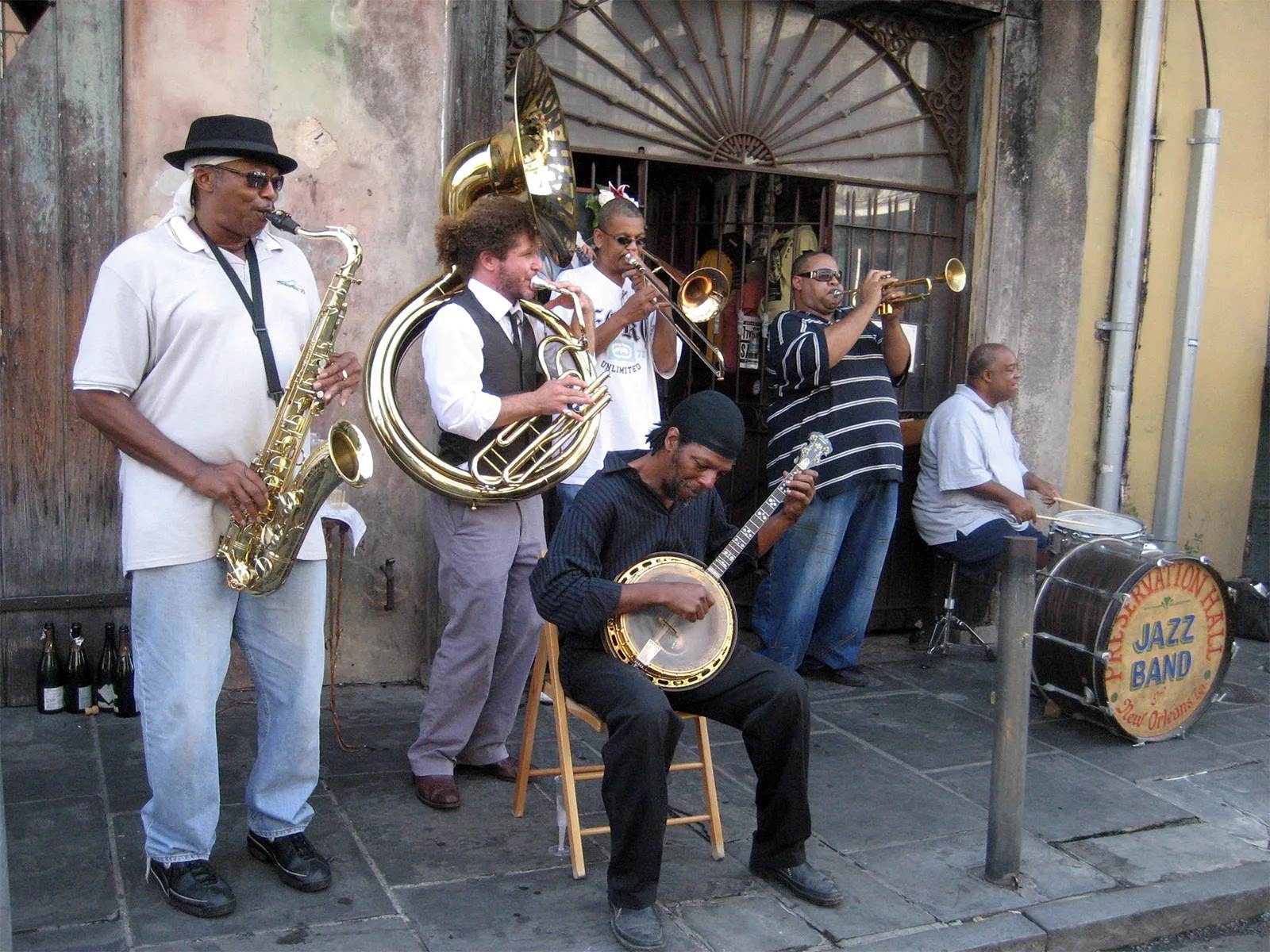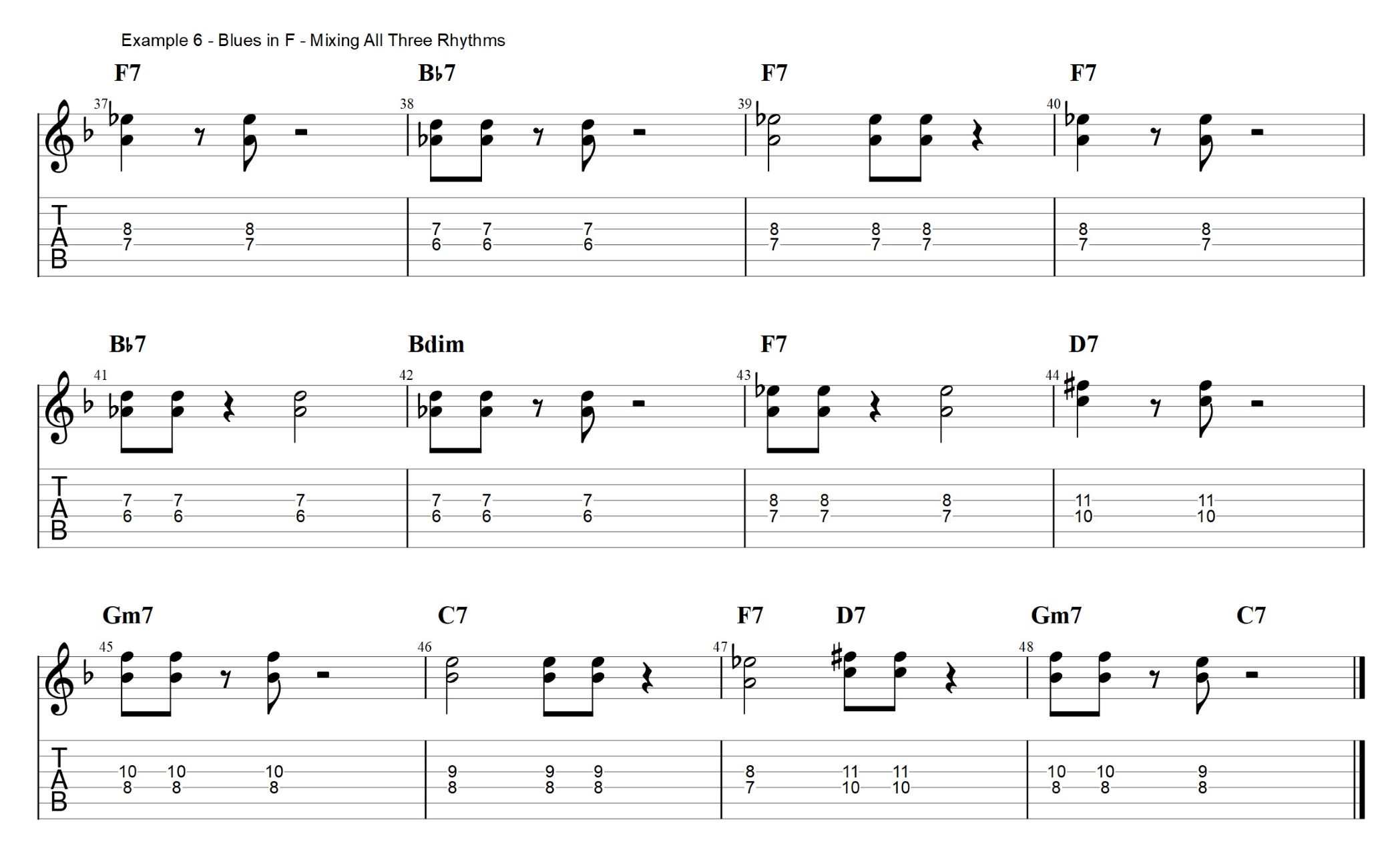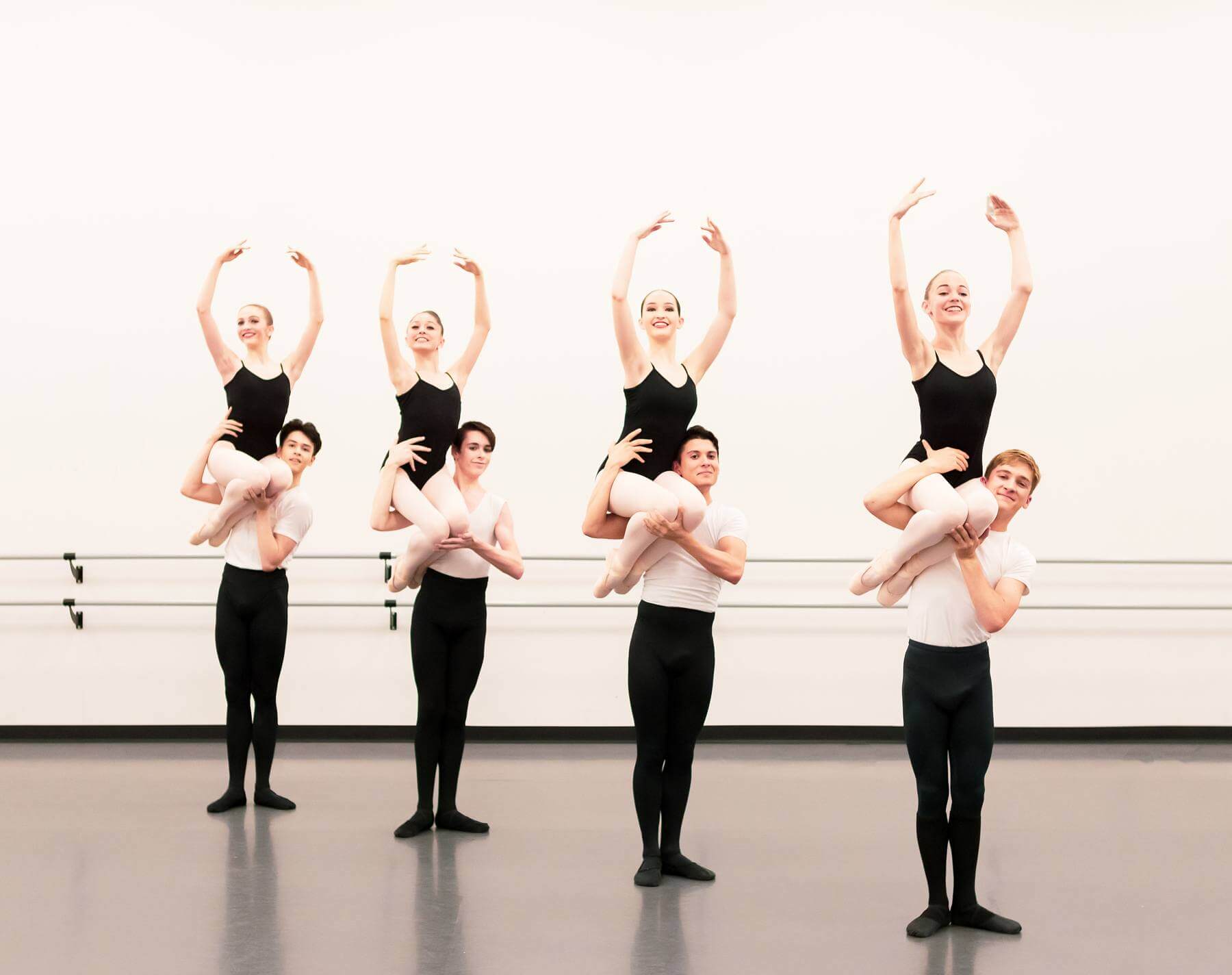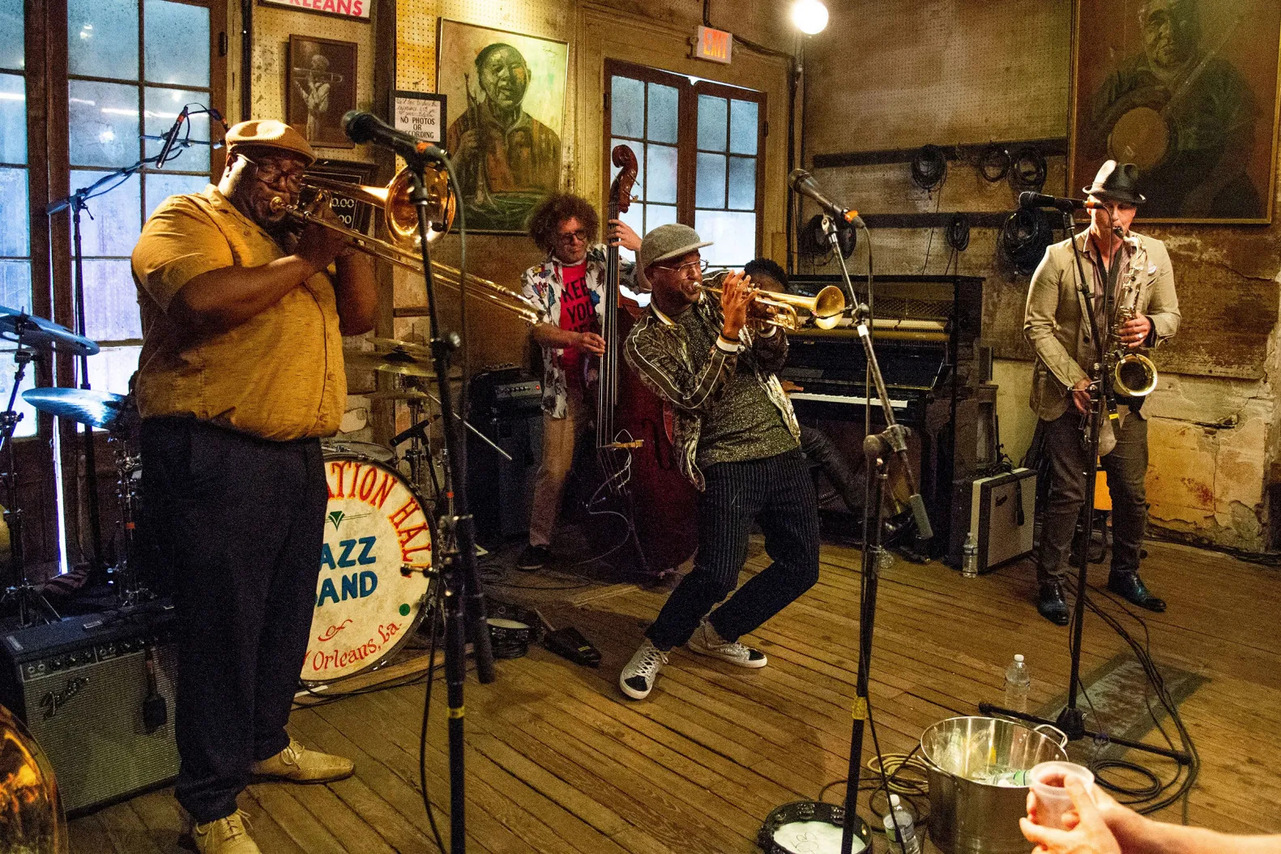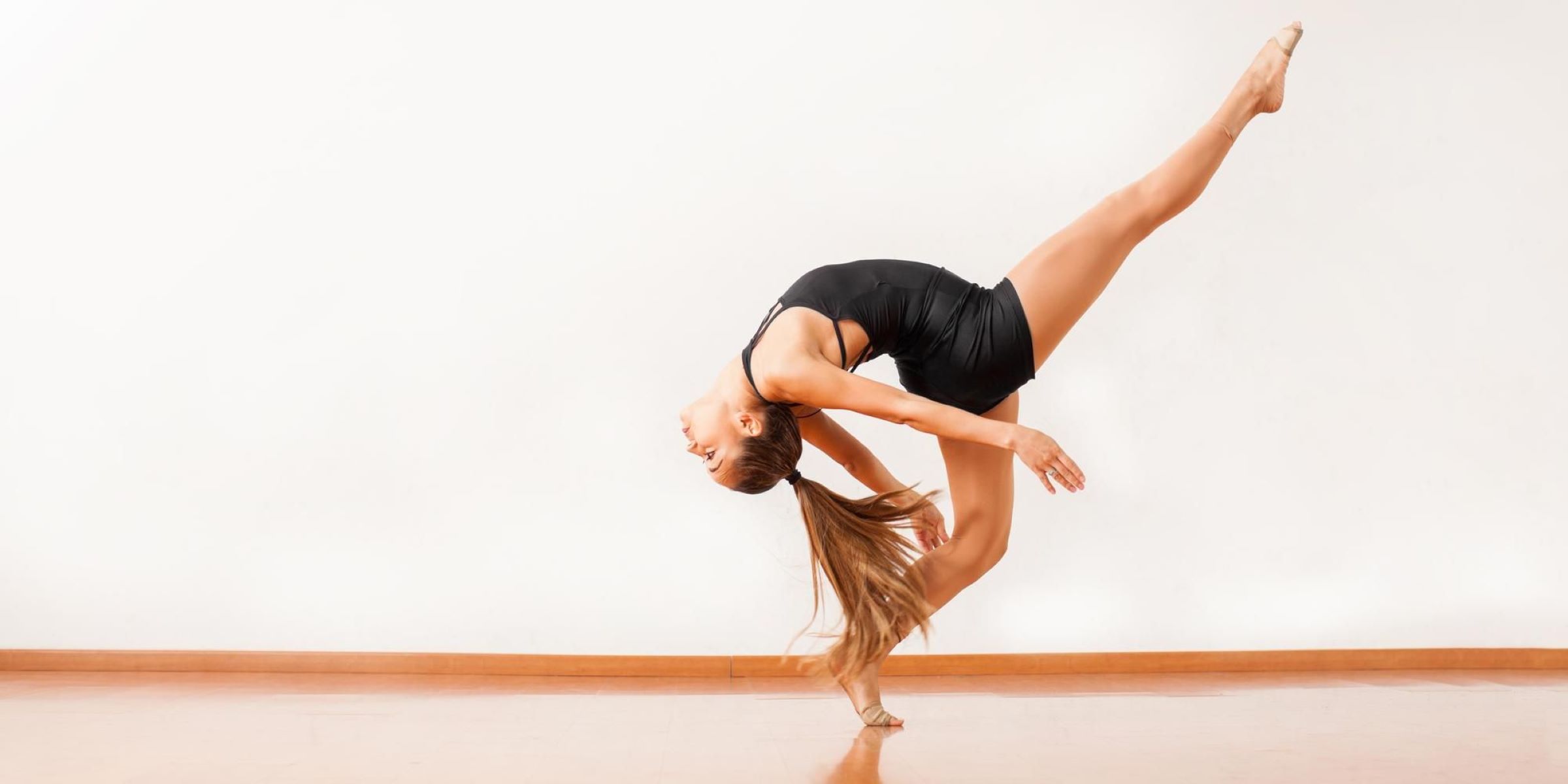

Jazz
What Is A Jazz Walk
Modified: January 22, 2024
Discover the beauty and rhythm of Jazz through a unique Jazz Walk experience. Immerse yourself in the soulful melodies and syncopated beats of this iconic music genre.
(Many of the links in this article redirect to a specific reviewed product. Your purchase of these products through affiliate links helps to generate commission for AudioLover.com, at no extra cost. Learn more)
Table of Contents
Introduction
Jazz, a genre of music known for its improvisation, syncopated rhythms, and rich harmonies, has not only influenced the music industry but has also left an indelible mark on various art forms, including dance. In the world of dance, jazz is known for its energetic movements, fluidity, and versatility. One key element of jazz dance that often gets overlooked is the Jazz Walk.
The Jazz Walk is a fundamental step in jazz dance that adds style, grace, and personality to a dancer’s performance. It is characterized by a smooth, gliding motion across the floor, often combined with intricate footwork and expressive arm movements. The Jazz Walk is not just a simple step; it is an art form in itself, requiring technical precision, musicality, and a deep understanding of jazz aesthetics.
The history of Jazz Walk can be traced back to the early 20th century, during the emergence of jazz music and its influence on dance. Jazz Walk found its roots in African-American vernacular dances, which combined African rhythms with European dance forms. In these dances, the Jazz Walk served as a way for dancers to showcase their individuality and improvisational skills, much like the musicians playing jazz music.
Over the years, the Jazz Walk evolved and became an integral part of jazz dance choreography. It gained popularity during the Jazz Age of the 1920s and 1930s, a time when jazz music and dance were highly influential in popular culture. As jazz music continued to evolve and push boundaries, so did the Jazz Walk, adapting to new styles and techniques.
Today, the Jazz Walk remains a staple in jazz dance routines and is often seen in various dance styles, from Broadway jazz to contemporary jazz. Its unique combination of elegance and power makes it a captivating element in performances, captivating audiences with its grace and rhythmic flair.
In the following sections, we will explore the history, characteristics, techniques, and benefits of incorporating Jazz Walk in dance training. Whether you are a beginner learning jazz dance or a seasoned dancer looking to refine your skills, understanding the intricacies of the Jazz Walk will deepen your appreciation for this dynamic dance form.
History of Jazz Walk
The Jazz Walk has its roots in the rich history of jazz music and dance. Its origins can be traced back to the early 20th century, a time when jazz was emerging as a powerful and influential genre.
In the early 1900s, African-American dancers in Harlem, New Orleans, and other vibrant cultural hubs began incorporating the rhythmic movements of jazz music into their dances. This fusion of African rhythms and European dance forms gave birth to the unique style known as jazz dance. As jazz music continued to evolve and gain popularity, so did the Jazz Walk.
During the Jazz Age of the 1920s and 1930s, the Jazz Walk reached new heights of popularity. It became a signature move in the Charleston, a highly popular dance of the time. The Charleston, characterized by its exuberant footwork, showcased the energy and syncopation of jazz music and allowed dancers to express their individuality.
As jazz music and dance continued to evolve, so did the Jazz Walk. In the 1940s and 1950s, the era of bebop and swing, the Jazz Walk became more refined and stylized. Dancers began incorporating intricate footwork patterns, syncopated movements, and playful arm gestures into their Jazz Walk repertoire.
In the 1960s and 1970s, jazz dance underwent a transformation as it became influenced by the social and cultural movements of the time. With the rise of modern jazz and fusion music, the Jazz Walk began to incorporate elements of contemporary dance. This fusion of styles gave birth to a more fluid, expressive, and dynamic Jazz Walk.
Today, the Jazz Walk continues to be an integral part of jazz dance routines. It has evolved to incorporate various styles and techniques, including street jazz, funk, and contemporary jazz. Some jazz choreographers have even pushed the boundaries of the Jazz Walk by infusing it with elements of hip-hop, breaking, and other urban dance styles.
Throughout its history, the Jazz Walk has served as a reflection of the cultural and musical developments of its time. It has adapted and evolved alongside jazz music, allowing dancers to showcase their creativity, musicality, and personal style. From its origins in African-American vernacular dances to its modern interpretation in contemporary jazz, the Jazz Walk remains a vibrant and dynamic element in the world of dance.
Characteristics of Jazz Walk
The Jazz Walk is a distinctive step in jazz dance that is characterized by its smooth, gliding motion and expressive movements. It adds flair, style, and personality to a dancer’s performance. Here are some key characteristics of the Jazz Walk:
- Fluidity: One of the defining features of the Jazz Walk is its fluidity. Dancers aim to create a seamless and effortless motion as they glide across the floor. The movements flow from one step to another, creating a visually captivating effect.
- Glide and Slide: The Jazz Walk often involves a gliding or sliding action, where dancers appear to move effortlessly across the floor. This technique requires dancers to have control over their weight shifting and use proper footwork to create the illusion of a smooth slide.
- Rhythm and Syncopation: Jazz music is known for its complex rhythms and syncopated beats, and the Jazz Walk follows suit. Dancers must have a strong sense of musicality and be able to sync their movements with the rhythm of the music. They often accentuate certain beats or emphasize syncopated rhythms in their steps.
- Expressive Arm Movements: In addition to the footwork, the Jazz Walk incorporates expressive arm movements. Dancers use their arms to enhance the overall performance, adding grace and fluidity to their motions. The arms can be extended, curved, or shaped in various ways to create visually appealing lines and shapes.
- Dynamic Changes in Level: The Jazz Walk incorporates dynamic changes in level, meaning dancers may rise or lower their stance throughout the movements. This adds dimension and variety to the performance, creating a visually interesting display of the body’s range of motion.
- Individuality and Style: The Jazz Walk offers dancers an opportunity to showcase their individuality and personal style. While there are technical aspects to the Jazz Walk, dancers are encouraged to infuse their own unique flair and personality into the movements. This allows for creative interpretation and brings a sense of authenticity to the performance.
These characteristics make the Jazz Walk a captivating and versatile element in jazz dance. It requires dancers to have a strong technical foundation, musicality, and a deep understanding of jazz aesthetics. Whether performed as a standalone step or incorporated into a larger routine, the Jazz Walk adds excitement, elegance, and sophistication to the dancer’s repertoire.
Famous Jazz Walks
The Jazz Walk has been an important element in jazz dance for decades and has been featured in numerous iconic performances. Here are a few famous Jazz Walks that have left a lasting impact:
- The Moonwalk: Perhaps the most famous Jazz Walk of all time is the Moonwalk. Popularized by the legendary Michael Jackson, the Moonwalk involves sliding backward while making it appear as if one is walking forward. The illusion of gliding across the floor, with one foot sliding while the other foot appears to step effortlessly, captivated audiences around the world.
- The Applejack: The Applejack is a classic Jazz Walk that originated in the 1920s. It involves a shuffling motion with the heels and toes, creating a playful and syncopated rhythm. The Applejack is often performed with a swinging arm movement and a cheeky facial expression, adding a touch of personality and charm.
- The Suzie Q: The Suzie Q is a Jazz Walk that gained popularity in the swing era of the 1930s and 1940s. It involves a side-to-side movement with a slight bend in the knees. Dancers often accentuate the step with a quick tap of the foot, creating a rhythmic and vibrant display of energy.
- The Spider Walk: The Spider Walk, popularized by the iconic dancer Fred Astaire, is a Jazz Walk characterized by its precise footwork and smooth glide. Dancers move forward in a diagonal pattern while crisscrossing their feet, creating a visually striking and intricate effect. The Spider Walk showcases Astaire’s incredible technical skill and impeccable timing.
- The Fosse Walk: The Fosse Walk is closely associated with the iconic choreography of Bob Fosse. Known for its precise, stylized movements, the Fosse Walk combines elements of jazz dance with Fosse’s signature isolations and angular gestures. This Jazz Walk is often performed with a turned-in stance and deliberate, controlled steps, creating a distinct and sophisticated look.
These famous Jazz Walks have not only cemented their place in dance history but have also influenced and inspired countless dancers around the world. Their unique styles and techniques showcase the versatility and innovation of the Jazz Walk, proving that it remains a powerful and enduring element in the world of jazz dance.
Techniques and Styles of Jazz Walk
The Jazz Walk encompasses a wide range of techniques and styles, allowing dancers to explore different movements and expressions within the genre. Here are some of the techniques and styles commonly associated with the Jazz Walk:
- Classic Jazz Walk: The classic Jazz Walk emphasizes the fundamental aspects of the step. It focuses on clean lines, precise footwork, and smooth transitions. Dancers maintain a strong sense of musicality and rhythm, accentuating the syncopated beats with their steps. The movements are often elegant and graceful, showcasing the dancer’s technical expertise.
- Broadway Jazz Walk: Broadway jazz takes inspiration from musical theater and incorporates storytelling and character work into the dance. In Broadway jazz walks, dancers may add elements of acting, pantomime, and exaggerated expressions to enhance their performance. The Jazz Walks in this style often emphasize the character’s personality and intentions, creating a dynamic and engaging narrative.
- Street Jazz Walk: Street jazz is a fusion of jazz dance with urban dance styles such as hip-hop and funk. In street jazz walks, dancers bring a contemporary and edgy vibe to the movements. The Jazz Walks in this style often include elements of popping, locking, and isolations, creating a visually dynamic and rhythmically intricate performance.
- Fusion Jazz Walk: Fusion jazz blends different dance styles and techniques to create a unique and innovative approach to the Jazz Walk. Dancers may incorporate elements of contemporary, ballet, or other dance genres into their Jazz Walks. This style encourages experimentation and creativity, allowing dancers to push the boundaries and explore new possibilities in their movement vocabulary.
- Funk Jazz Walk: Funk jazz walks incorporate the funk and soul elements of music into the Jazz Walk. Dancers bring a sense of groove, sass, and attitude to their movements. The Jazz Walks in this style often incorporate body rolls, slides, and isolations, emphasizing the funky and soulful nature of the music.
Each technique and style of the Jazz Walk offers dancers a unique way to express themselves and showcase their individuality. Whether it is the elegance of classic jazz, the storytelling of Broadway jazz, or the edginess of street jazz, the Jazz Walk allows for a diverse range of interpretations and artistic choices.
It is important for dancers to have a strong technical foundation, including correct posture, alignment, and footwork, to execute the Jazz Walk effectively. They must also develop a keen sense of musicality and rhythm to synchronize their movements with the music.
Exploring different techniques and styles of the Jazz Walk not only enhances a dancer’s versatility but also broadens their understanding of the possibilities within jazz dance. By mastering different approaches to the Jazz Walk, dancers can adapt to various choreographic styles and confidently showcase their skills in diverse performance settings.
Jazz Walk in Contemporary Dance
While the Jazz Walk is deeply rooted in the history and traditions of jazz dance, it has also found its place in contemporary dance. Contemporary dance is a genre that combines elements of modern dance, ballet, and improvisation, allowing for a wide range of artistic expression. The Jazz Walk, with its versatility and dynamic qualities, has seamlessly integrated itself into the contemporary dance vocabulary.
In contemporary dance, the Jazz Walk serves as a powerful tool for choreographers to explore movement dynamics, musicality, and storytelling. It adds a touch of nostalgia and sophistication to contemporary dance pieces, creating a sense of connection between the past and the present.
Contemporary choreographers often incorporate the Jazz Walk to evoke a sense of freedom, fluidity, and expressiveness. They may use the Jazz Walk as a transitional movement to connect various sequences or as a focal point to highlight a specific theme or emotion within the choreography.
The Jazz Walk within the realm of contemporary dance has evolved beyond its traditional form. Dancers experiment with different variations, incorporating elements of improvisation, floor work, and partnering. They may intertwine the Jazz Walk with other contemporary dance techniques, creating a unique fusion of styles that reflects the versatility and innovation of contemporary dance.
Contemporary choreographers also embrace the interpretation and personalization of the Jazz Walk. Dancers are encouraged to infuse their own style and individuality into the movement, bringing their own experiences and emotions to the choreography. This allows for a genuine and authentic performance that resonates with both the dancers and the audience.
The Jazz Walk in contemporary dance plays a vital role in enhancing the overall composition and narrative of a piece. It can add a sense of rhythm and structure, provide a contrast to other movements, or emphasize dynamic changes in the choreography. Its incorporation in contemporary dance reflects the evolving nature of the art form, as it continues to draw inspiration from various styles and traditions.
Moreover, the Jazz Walk in contemporary dance serves as a testament to the enduring influence of jazz music and its impact on the evolution of dance. It pays homage to the pioneers of jazz dance while allowing for the exploration of new possibilities and creative expressions.
Overall, the integration of the Jazz Walk into contemporary dance showcases the versatility and adaptability of this iconic step. It bridges the gap between tradition and innovation, allowing dancers and choreographers to tap into the rich history of jazz dance while pushing the boundaries of contemporary movement.
Benefits of Incorporating Jazz Walk in Dance Training
The Jazz Walk is not only a captivating and expressive step in jazz dance but also offers numerous benefits when incorporated into a dancer’s training. Here are some key advantages of incorporating the Jazz Walk into dance training:
- Technique and Coordination: The Jazz Walk requires dancers to have precise footwork, control over weight shifting, and coordination of movement. By practicing the Jazz Walk, dancers can improve their technical skills and develop a strong sense of body awareness. It helps them refine their technique and enhance their overall performance quality.
- Musicality and Rhythm: The Jazz Walk is deeply rooted in the syncopated rhythms and musicality of jazz music. By incorporating the Jazz Walk into dance training, dancers can develop a keen sense of musicality and rhythm. They learn to interpret and embody the musical nuances of jazz, which enhances their ability to connect with the music and express themselves through movement.
- Performance Quality: The Jazz Walk adds grace, elegance, and style to a dancer’s performance. By mastering the Jazz Walk, dancers learn the importance of fluidity, smooth transitions, and expressiveness. It helps them develop stage presence and enhance their overall performance quality, captivating audiences with their captivating movements.
- Body Control and Balance: The Jazz Walk requires dancers to maintain proper alignment, balance, and body control. It challenges dancers to engage their core muscles, maintain stability, and execute precise movements. By regularly practicing the Jazz Walk, dancers can improve their overall body control, posture, and balance, leading to better overall dance technique.
- Expressiveness and Individuality: The Jazz Walk offers dancers a platform to showcase their individuality and personal style. It encourages self-expression and allows dancers to infuse their own creativity into the movement. By incorporating the Jazz Walk in their training, dancers can explore different ways to express themselves, adding depth and authenticity to their performances.
- Versatility and Adaptability: The Jazz Walk is a versatile step that can be incorporated into a variety of dance styles and genres. By adding the Jazz Walk to their repertoire, dancers become more versatile and adaptable performers. They learn to seamlessly transition between different movement styles and embody the essence of jazz dance, demonstrating their versatility as dancers.
Incorporating the Jazz Walk into dance training not only enhances technical proficiency but also cultivates a deeper appreciation for the historical and cultural significance of jazz dance. It fosters a connection to the roots of the art form while allowing dancers to explore their own creativity and individuality.
Furthermore, the benefits gained from practicing the Jazz Walk extend beyond the dance studio. The skills acquired, such as discipline, musicality, and body awareness, can be applied to various aspects of life, fostering personal growth and self-confidence.
Overall, incorporating the Jazz Walk into dance training is a valuable investment in a dancer’s development. It offers a multitude of benefits, both technical and artistic, while celebrating the rich history and expressive qualities of jazz dance.
Conclusion
The Jazz Walk, with its smooth gliding motions, expressive arm movements, and rich history, is a fundamental and captivating element of jazz dance. Rooted in the history of jazz music, the Jazz Walk has evolved over the years, adapting to different styles and techniques while continuing to captivate audiences worldwide.
From the iconic Moonwalk popularized by Michael Jackson to the classic Applejack and the intricate Spider Walk, the Jazz Walk has showcased its versatility and artistic potential. It has found its place not only in jazz dance but also in contemporary dance, where it adds a unique touch of nostalgia and sophistication.
By incorporating the Jazz Walk into dance training, dancers benefit in various ways. They develop technical precision, coordination, and body control. They also cultivate a strong sense of musicality, rhythm, and expressive movement. The Jazz Walk allows dancers to embody individuality and style, enhancing their performance quality and stage presence.
Furthermore, the Jazz Walk serves as a connection to the rich history and cultural significance of jazz dance. It is a tribute to the pioneers of jazz and an opportunity for dancers to explore and appreciate the roots of the art form. The Jazz Walk’s adaptability and fusion with other dance styles embody the ever-evolving nature of dance, pushing boundaries and inspiring creativity.
In conclusion, the Jazz Walk is a cherished element in the world of dance. It is an embodiment of the essence of jazz music, allowing dancers to express themselves with grace, elegance, and rhythm. Incorporating the Jazz Walk into dance training not only enhances technical proficiency but also fosters creativity, individuality, and a deeper understanding of the rich cultural heritage of jazz dance.
Whether in a classic jazz routine, a contemporary fusion piece, or a Broadway showstopper, the Jazz Walk continues to shine as a timeless and captivating step that brings joy and excitement to both dancers and audiences alike.



